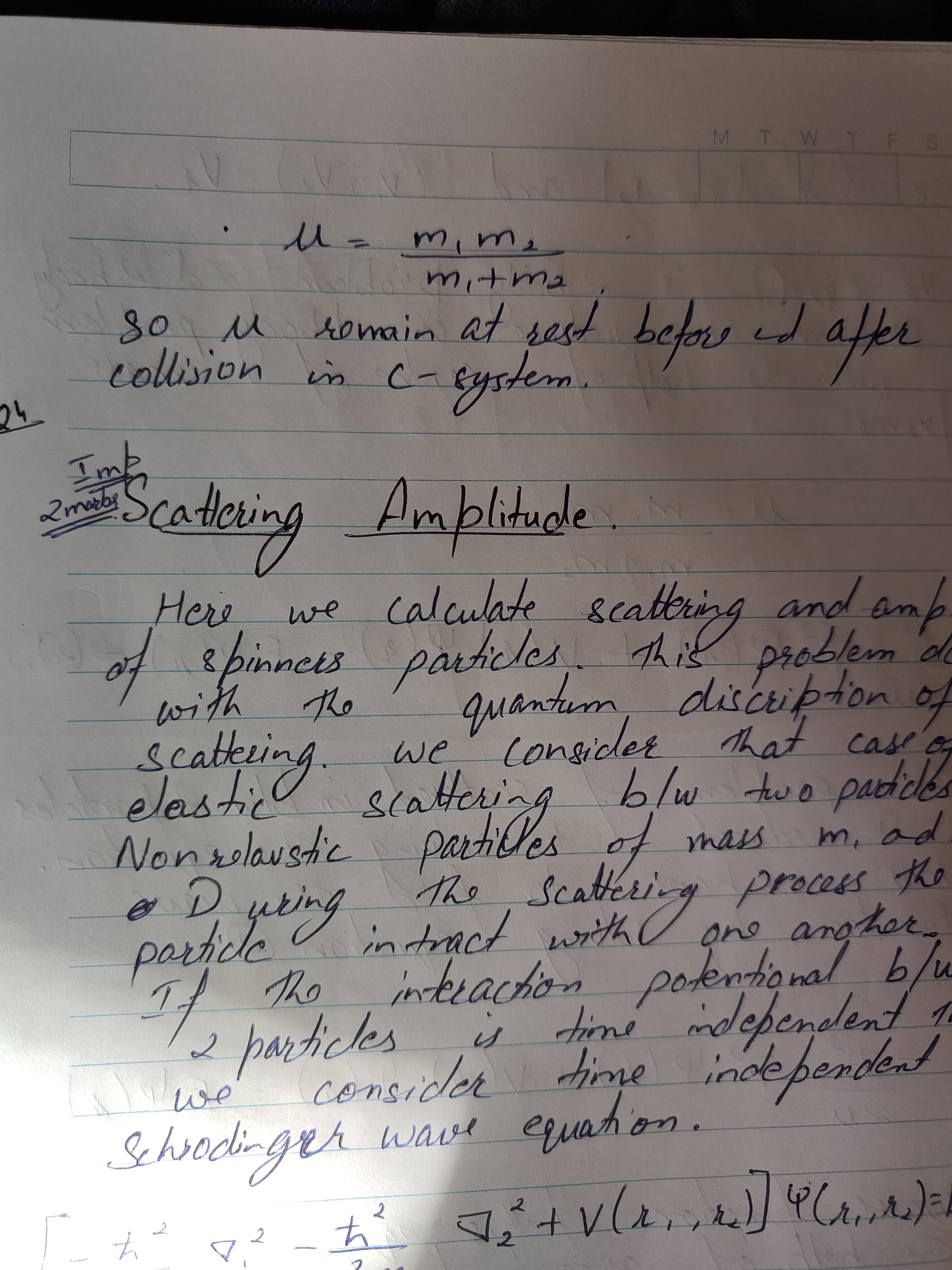How do we calculate scattering and amplitude of spinless particles in the context of quantum mechanics and their interaction potentials?

Understand the Problem
The question appears to involve concepts related to scattering amplitude in physics, particularly quantum mechanics. It discusses elastic and non-elastic scattering of particles, their interaction potentials, and possibly requires derivation or explanation of equations related to the Schrödinger wave equation.
Answer
Use the Lippmann-Schwinger equation to calculate scattering amplitude and cross sections.
The scattering and amplitude of spinless particles are calculated using the Lippmann-Schwinger equation, which reformulates the problem in terms of an integral equation. This involves determining the scattering amplitude from boundary conditions and then using it to find scattering cross sections.
Answer for screen readers
The scattering and amplitude of spinless particles are calculated using the Lippmann-Schwinger equation, which reformulates the problem in terms of an integral equation. This involves determining the scattering amplitude from boundary conditions and then using it to find scattering cross sections.
More Information
The Lippmann-Schwinger equation is central to understanding quantum scattering. It transforms the scattering problem into a solvable integral equation.
Tips
Common mistakes include not properly applying boundary conditions and neglecting the complex nature of the scattering amplitude.
Sources
- The Lippmann-Schwinger Equation and Formal Scattering Theory - bohr.physics.berkeley.edu
- Scattering theory - ugr.es
- Scattering Theory - people.umass.edu
AI-generated content may contain errors. Please verify critical information